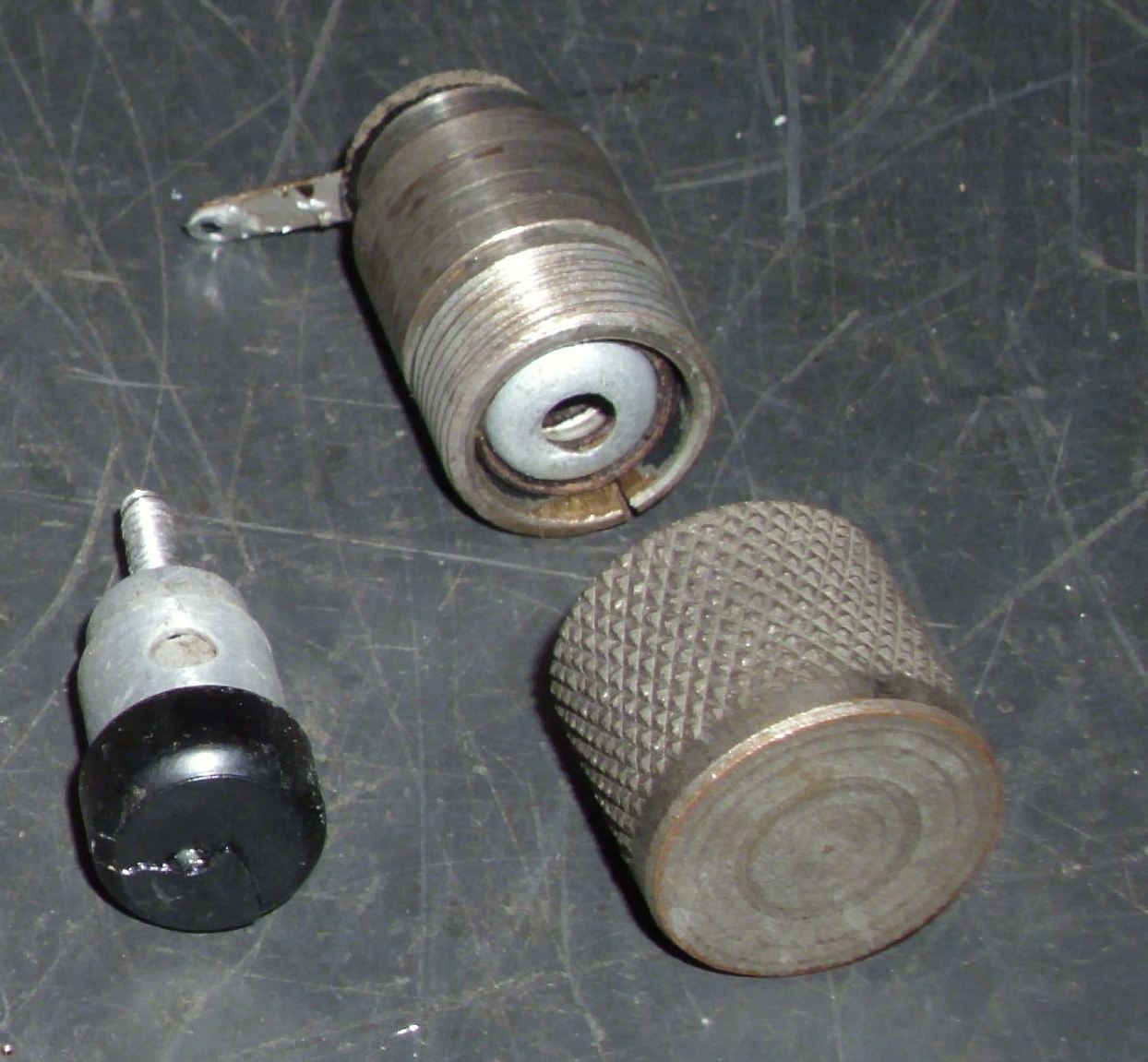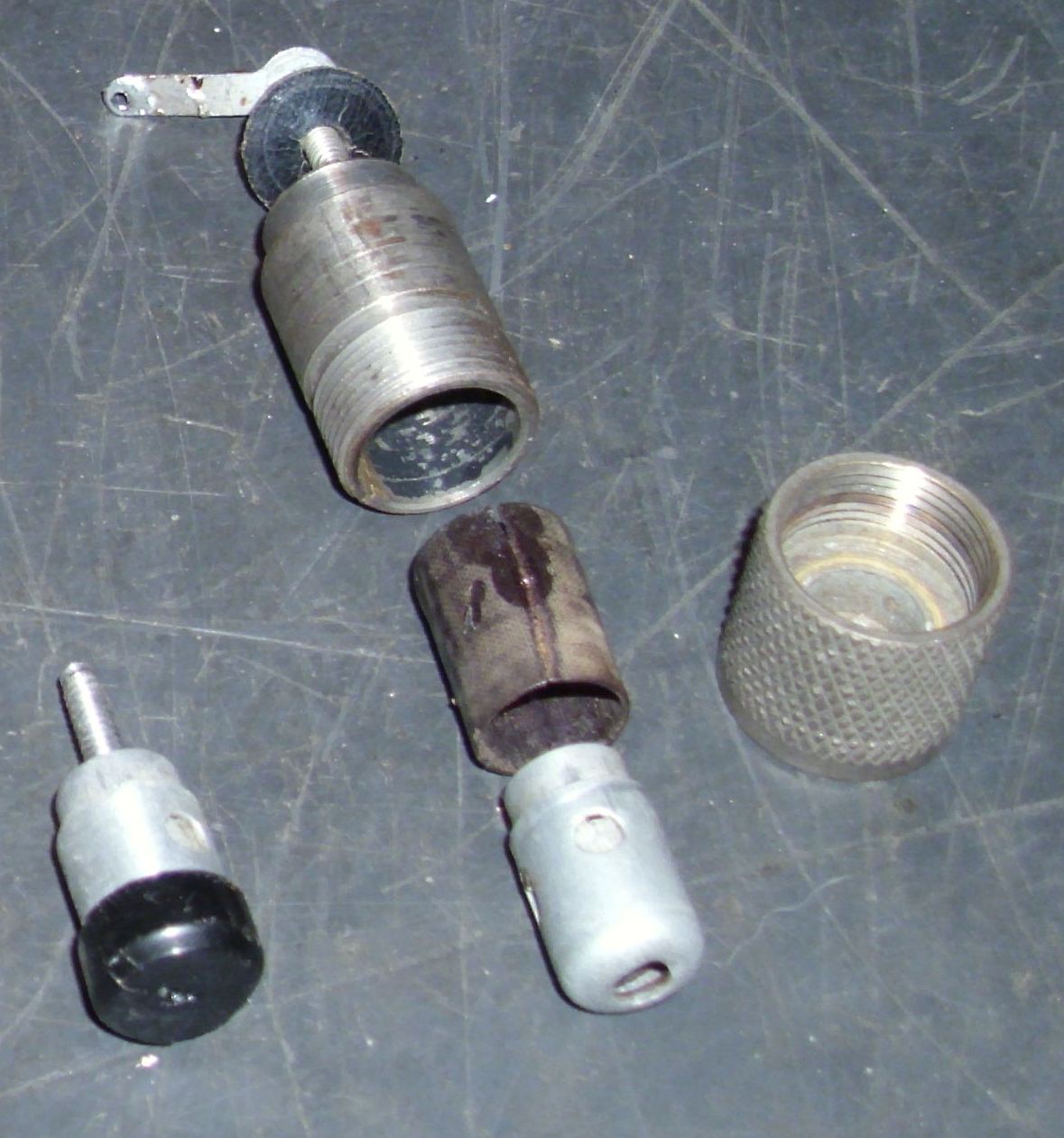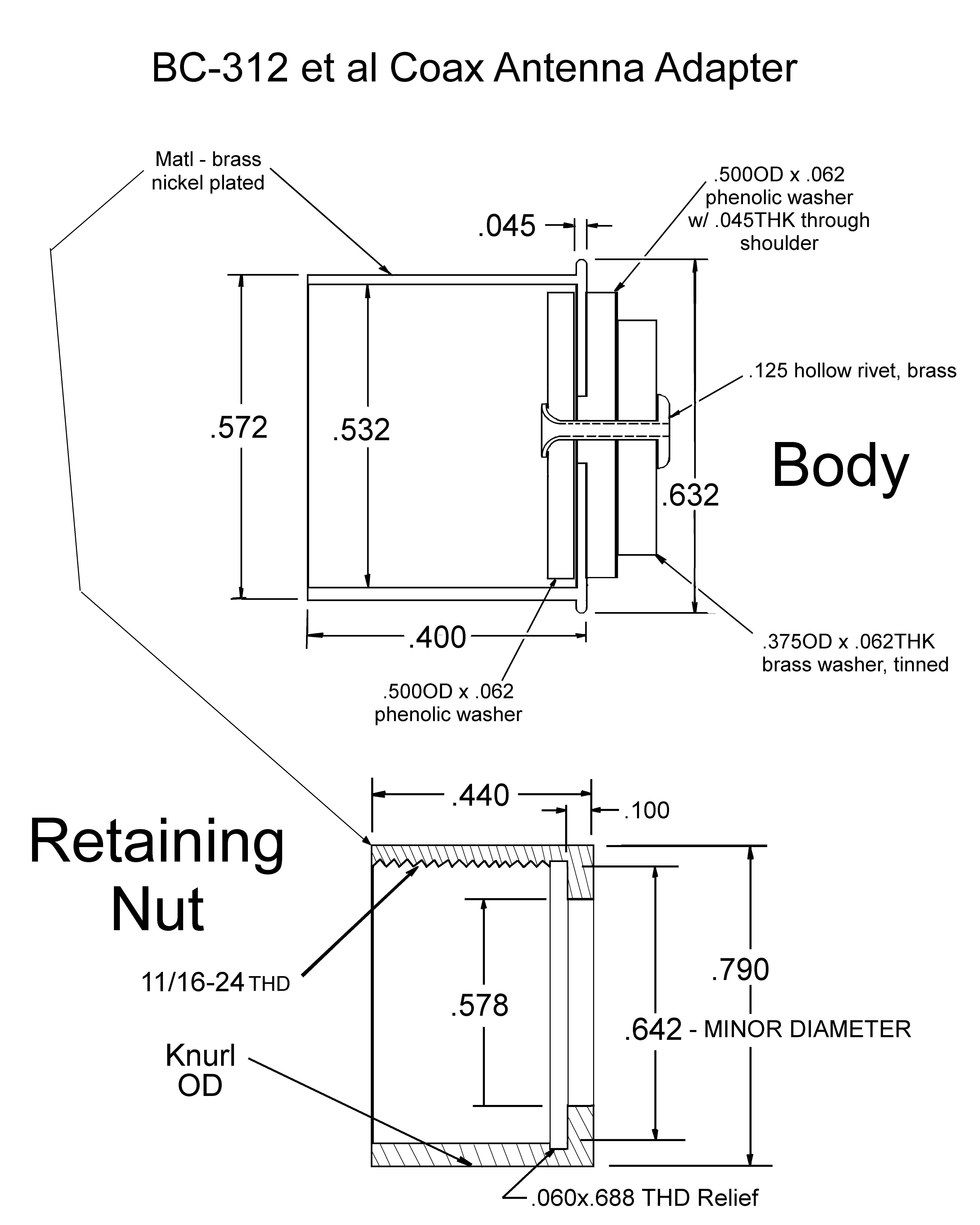Under the rubric of useless information that I occasionally try to distribute to the one or two people on the planet who might find it slightly interesting, a friend of mine asked me if I knew of a connector nomenclature for the coax antenna input cable connector that is found on the BC-312/BC-314/BC-342/BC-344 series of ground receivers. Although not an aircraft set, I felt enough sympathy to do some research on the question. Here's what I found, for what it's worth.
We'll start with a photo of what I'm talking about. Below is an example of the original, unused cable end connector in question, this one removed from a BC-312 receiver to serve as a test subject. The coaxial cable center conductor is intended to be soldered into the center eyelet and the shield soldered into the body of the adapter.
A roundup of the usual suspects yielded no one who had ever recalled seeing a nomenclature on the connector. There is a black remnant on the OD of one I have here that might have been an ink stamped number, but is probably just a dirt smudge. Perusal of the available Signal Corps documents here did not reveal any clue, which seems strange given the military preference for documenting every part ad nauseum. There are two excellent photos of the mating chassis mount connector on Ray Robinson's outstanding article on the BC-312 at http://www.tuberadio.com/robinson/museum/BC-312/ that is useful to fabricate one of the cable end connectors in question, shown below. The original design seems to be a somewhat curious last minute kludge of modifying a push pin terminal with a shield, and makes one wonder why a normal SO-239 or other commercial connector wasn't used. Lost in antiquity, apparently.


Luckily, using an actual mating connector, it is easy to put together a fabrication sketch - shown below: It is reminiscent of the old Switchcraft microphone connector that had a 5/8"-27 thread, but the 11/16"-24 thread on this knurled retaining nut is one I have only seen on one other kludge of a connector - the one on the DU-* radio compass used for the output to the RU-** receiver.

This is not a difficult fabrication job, as none of the dimensions are particularly critical. The hollow rivet is sometimes called an eyelet, and a center punch is all that is necessary to set it in the stack of insulators and washer. The 11/16"-24 thread on the knurled retaining nut can be single-pointed on a lathe - the UNEF tap can be a little expensive. The original sleeve resembles a .45 caliber ACP cartridge that is an upset formed part, but that is (sadly) not large enough in diameter to use.
All sorts of variations could be developed, including the use of teflon or some other insulator rather than phenolic, though it does need to withstand soldering temperature for a short period. The ID of the sleeve could be adjusted to other types of coax cable - the existing sleeve appears to be intended to mate with RG-8 cable.